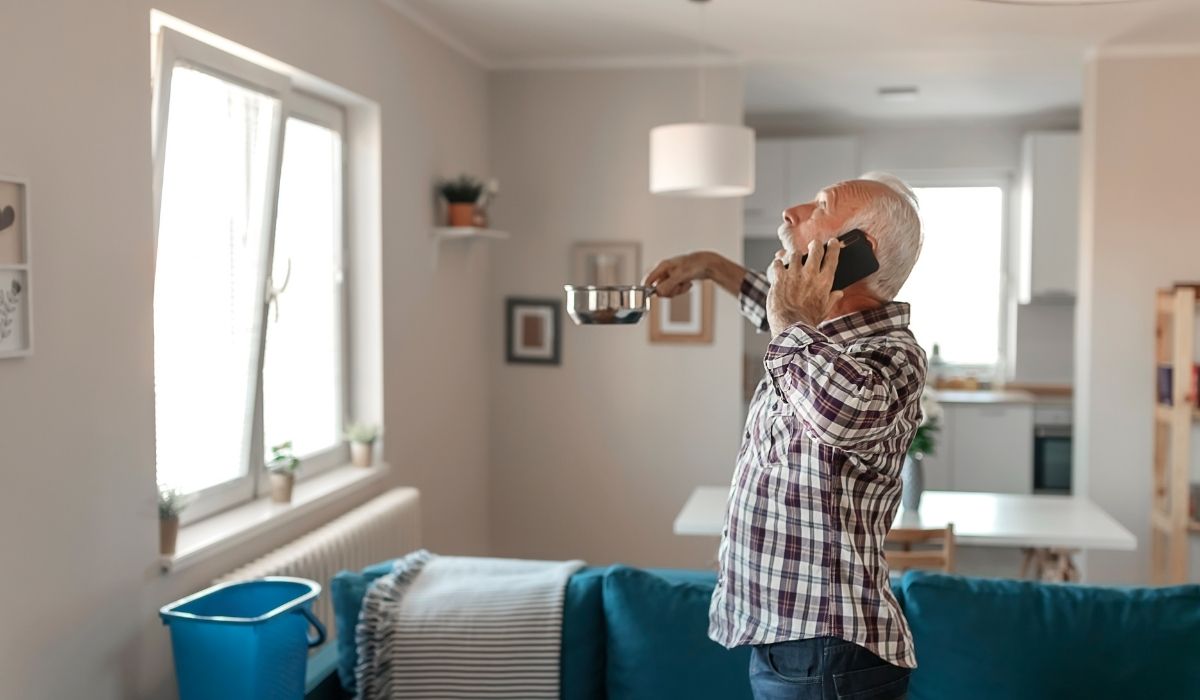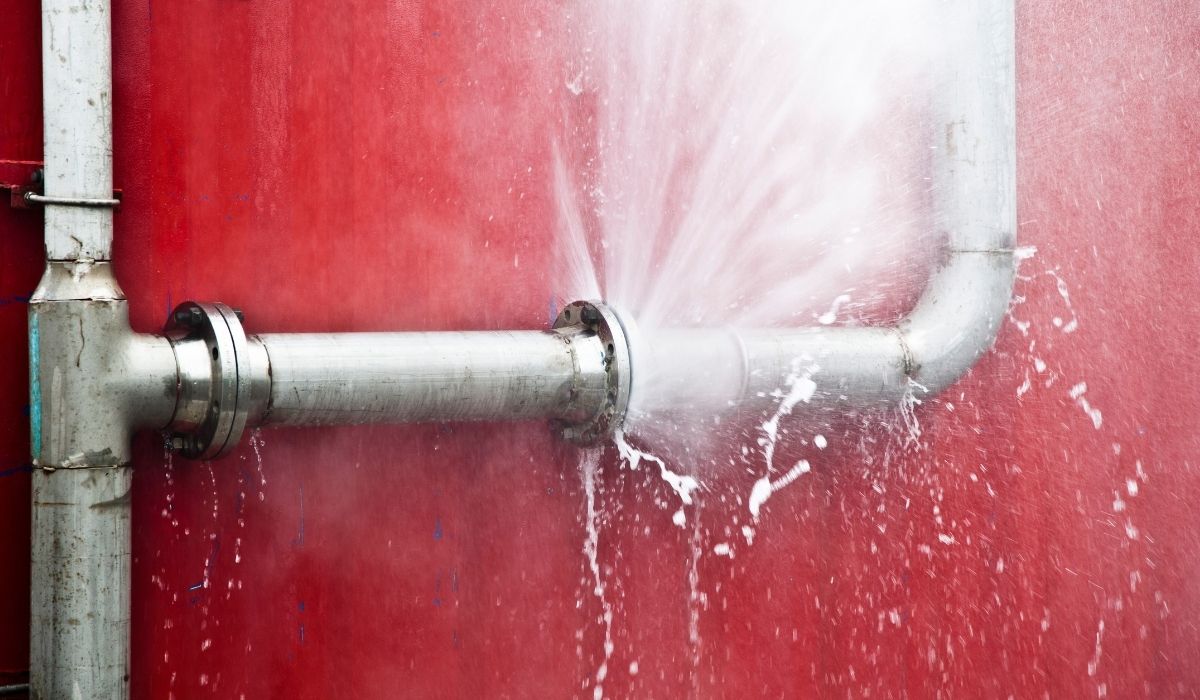DIY Water Damage Cleanup: Understanding Safety Limits

DIY Water Damage Cleanup: When It's Safe and When It's Not
Water damage is a common problem faced by homeowners, especially during severe weather, plumbing failures, or accidental leaks. Knowing when you can handle the cleanup yourself and when to call a professional is critical for preserving your home’s structural integrity and protecting the health of its occupants. This article offers a comprehensive guide to assessing water damage, recognizing the signs that indicate professional intervention, and providing effective DIY cleanup tips. It emphasizes key considerations such as the extent of damage, type of water involved, potential electrical risks, and overall structural soundness. Homeowners will gain a clear understanding of when it is safe to do the work themselves and when professional water damage restoration services should be engaged. Through real-world examples, research-backed analysis, and detailed explanations of emergency management practices, this guide also integrates industry terms like degradation, moisture content, and mold prevention to help readers make informed decisions.
Furthermore, this article considers various scenarios—from minor leaks to severe flooding—outlining the appropriate cleanup methods and safety measures required for each. It also touches on aspects such as indoor air quality, evaporation rates, and the use of personal protective equipment like n95 respirators during the process. With insights drawn from peer-reviewed studies and practical case studies, homeowners are encouraged to assess the risks and benefits of a DIY approach versus professional intervention carefully. By understanding these critical factors, homeowners can not only save money but also mitigate long-term structural issues and health hazards arising from improper handling of water damage.
Transitioning now into the detailed steps, we begin by discussing how to assess the severity of water damage.
Assessing the Severity: Can You Handle the Water Damage Cleanup Yourself?
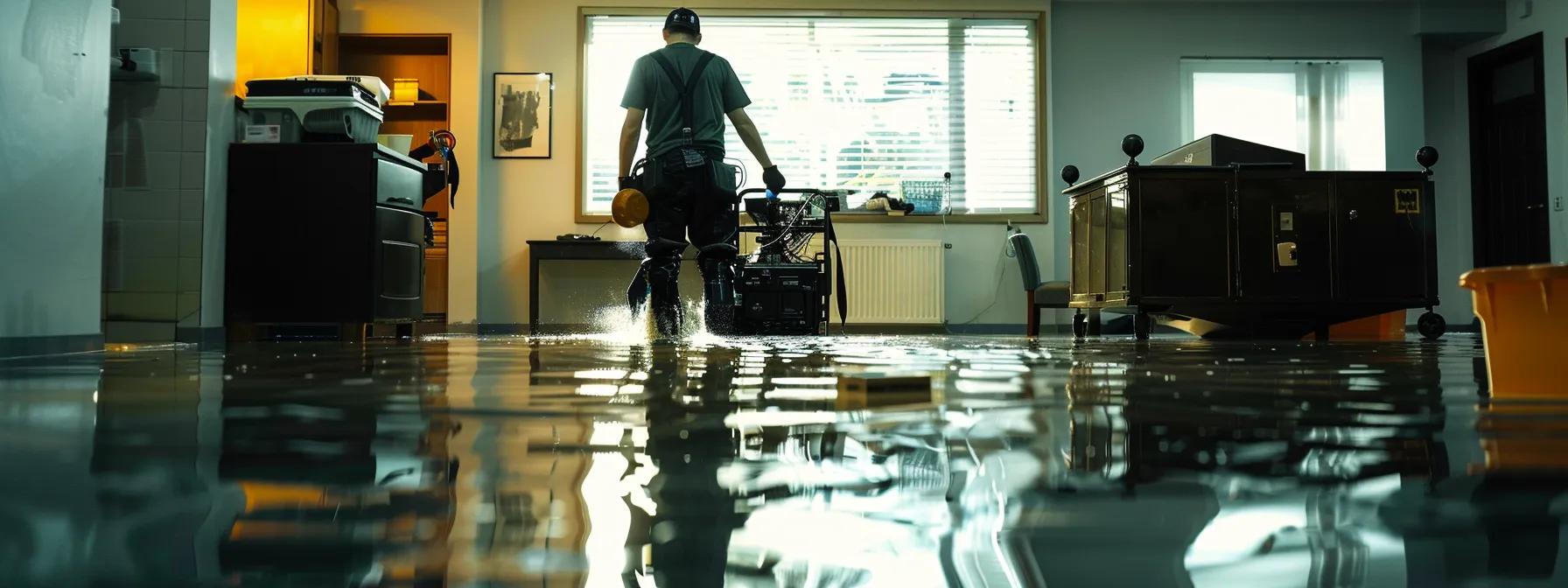
In the early stages of water damage, it is essential to determine whether the situation is manageable for a DIY cleanup or if it requires immediate professional action. Homeowners must evaluate the damage by first identifying the types of water involved and assessing the extent of the damage. The initial step is to carefully inspect the affected areas and determine if the water damage is localized to a small spill or leak, or if it has spread over a larger area. Assessing the water’s source and type—whether it is clean water from a broken pipe, grey water from appliance overflow, or black water resulting from sewage or floodwaters—is critical because each type carries different health risks and cleanup requirements.
Identifying Minor Water Damage Suitable for DIY Cleanup
The easiest water damage cases are those confined to a small area with clean water, such as a minor leak from a tap or condensation on windows. In these cases, homeowners should first stop the water source, if possible, and then quickly remove standing water using mops, towels, or a wet vacuum. The goal is to extract as much of the water as possible while preventing the growth of mold and mildew, which thrive in damp conditions. Additionally, drying the area with fans and dehumidifiers can help reduce moisture levels quickly. Frequent recycling of cleaning materials and proper ventilation ensure that even minor spills do not escalate into larger outbreaks of mold growth.
Recognizing Extensive Damage That Needs Expert Attention
When water damage covers a vast area or when water infiltration impacts walls, flooring, and insulation significantly, it indicates that the situation may be well beyond the DIY capacity. Extensive damage may involve several rooms, hidden moisture behind walls, or damage to floors that could compromise structural integrity. In such cases, professional water damage restoration teams are equipped with precision moisture meters, industrial dehumidifiers, and expertise in extracting water and preventing long-term damage. Homeowners noticing bulging walls, significantly warping floors, or unpleasant odors should suspect that extensive water damage has occurred. Persistent dampness that does not dry out within a couple of days can also lead to serious mold infestations and structural problems that necessitate professional remediation.
Evaluating the Type of Water Involved: Clean, Grey, or Black
An essential aspect of assessing water damage is determining the water’s category. Clean water—the type from a neat source like a broken pipe—is typically safe for DIY efforts, provided it is promptly addressed. However, grey water, which contains contaminants such as detergents or food waste, requires additional caution due to the potential for bacterial growth and other hazards. Black water, on the other hand, is highly contaminated, often originating from sewage backups or floodwaters. It poses significant health risks, making personal cleanup dangerous. For such cases, certified professionals use advanced personal protective equipment and follow stringent procedures to ensure safe handling and disposal of hazardous materials. It is prudent to conduct a simple test visually or with chemistry kits, but when in doubt, err on the side of caution and seek expert assistance.
Checking for Structural Soundness Before Starting DIY Water Cleanup
Before embarking on a DIY cleanup, a vital consideration is the structural integrity of the affected area. Water infiltration can weaken walls, floors, and ceilings, leading to potential collapses if not properly addressed. Homeowners should check for signs such as cracks, bulging ceilings, or softened drywall that might indicate a compromised structure. Using a moisture meter, if available, can help identify hidden damp areas behind walls or under floors. If the structural soundness is in question, even a seemingly minor leak may necessitate professional intervention to prevent further damage. This evaluation helps prevent accidents and indicates whether the cleanup process might be more dangerous than anticipated.
Understanding Your Own Capabilities and Limitations
Finally, the decision to proceed with a DIY cleanup depends largely on personal skill and available resources. Homeowners must assess whether they have the necessary tools—such as wet vacuums, dehumidifiers, fans, cleaning agents, and personal protective equipment—to safely manage the cleanup. Beyond physical capability, understanding the complexity of water damage restoration is essential. For instance, if electrical wiring is exposed or if heavy water permeation compromises load-bearing structures, the risk to personal safety is significantly increased. In such instances, even if the damage appears minimal, it is wise to engage professionals who are trained in handling hazardous conditions. Recognizing these personal limitations can help avoid costly mistakes and prevent further deterioration of the property.
Key Takeaways: – Minor water damage from clean water sources can often be managed with immediate DIY measures. – Visible signs of extensive damage indicate the need for professional restoration. – Proper classification of water type (clean, grey, or black) is critical for choosing safe cleanup methods. – Structural integrity should be evaluated before beginning any DIY cleanup process. – Homeowners must realistically assess their skills and equipment before attempting water restoration.
Critical Signs That Demand You Call Professionals for Water Damage Repair
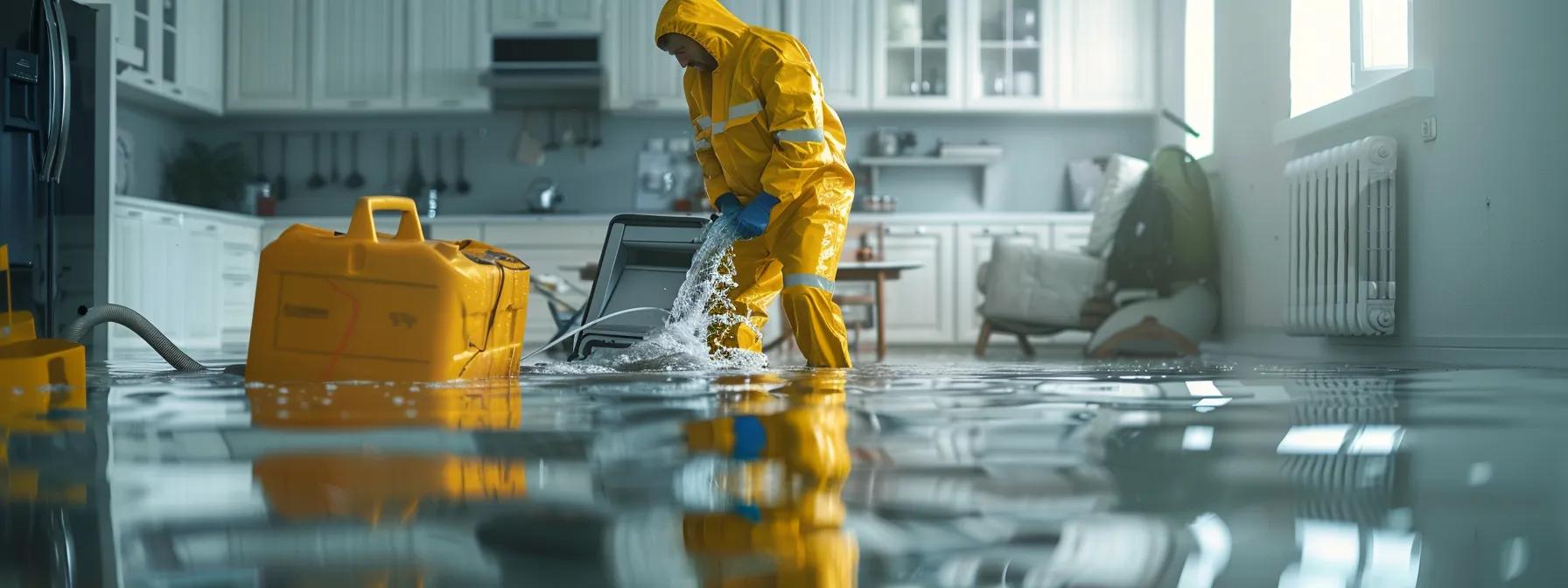
In certain situations, water damage presents clear indicators that professional services are necessary to ensure safety and avoid long-term complications. Recognizing these critical signs promptly can make a significant difference in how successfully a property recovers from water damage incidents. Professionals in water damage restoration not only help in reducing the risk of health hazards like mold and bacteria but also protect the home’s structural integrity, ultimately preserving property value.
When to Call Professionals Due to Contaminated Water Exposure
One of the primary red flags for calling in professionals is the presence of contaminated water, or black water. When water originates from sources such as sewage backups, flood waters, or any stagnant water with visible contaminants, the risks of infection and exposure to harmful pathogens increase dramatically. Professional water damage restoration teams are trained to handle such hazardous conditions by using advanced equipment and personal protective measures to minimize health risks. Homeowners should never attempt to clean up black water with standard cleaning supplies, as this can lead to exposure to dangerous bacteria, viruses, and chemicals. Experts utilize industrial-grade disinfectants and follow strict environmental protocols in accordance with OSHA guidelines to neutralize these contaminants safely.
Indications of Widespread Mold Growth Requiring Expert Remediation
Mold growth often signals prolonged moisture exposure and can indicate hidden water damage areas that are not immediately visible. If homeowners begin to notice musty odors, visible patches of mold, or staining that persists even after an initial cleanup, it is a sign that water damage has created conditions ideal for fungal proliferation. Extensive mold growth can affect both indoor air quality and structural elements, posing respiratory health risks especially for individuals with allergies or compromised immune systems. Professionals not only remove the mold using specialized equipment and techniques, but they also apply antimicrobial treatments to prevent its return. Given that remediation standards demand strict control measures to eliminate mold completely, this is a task best left to experts.
Electrical Hazards and Water Damage: A Clear Signal for Professional Help
Exposed electrical systems or moisture in electrical areas should never be underestimated. Water and electricity can create dangerous situations, including the risk of electrocution or fire. If homeowners suspect that water has seeped into outlets, light fixtures, or behind electrical panels, the entire area should be evacuated immediately, and experts must be contacted to handle the repairs. A licensed electrician in collaboration with water damage specialists can assess the situation to ensure that all electrical installations are safe to operate. This multi-disciplinary approach guarantees that the hazardous interaction between water and electrical systems is managed securely, preventing further damage to both the property and the occupants.
Significant Saturation in Walls, Ceilings, or Flooring
When water saturation extends into structural elements such as walls, ceilings, or flooring, it suggests that the damage is more profound than a simple surface spill. These issues often involve hidden moisture that can compromise load-bearing structures, promote mold growth, and weaken building materials over time. Visible sagging, discoloration, or cracks are direct indicators that the structure has been significantly impacted. In such instances, professionals bring in moisture measurement devices, thermal imaging cameras, and specialized drying systems to recover the affected areas safely and effectively. Addressing these issues without professional guidance may result in incomplete drying, leading to further deterioration.
If the Water Source Remains Unidentified or Unstoppable
A clear sign that professional intervention is needed is when the source of the water is not identifiable or continues to leak despite temporary measures. Uncontrolled water flow can result in widespread damage that is difficult to contain using DIY methods. Whether it stems from a hidden pipe burst or an unrealized structural breach, the persistent presence of water necessitates a professional diagnosis. Experts can trace the source using advanced equipment and repair the issue at its origin, preventing recurrence. Furthermore, professionals are also equipped to manage the aftermath of unexpected sources, including potential chemical contamination or explosive pressure hazards.
Key Takeaways: – Contaminated water (black water) requires immediate professional intervention. – Visible mold, persistent musty odors, and staining point to widespread fungal growth. – The presence of water near electrical systems is an immediate safety hazard. – Structural components showing significant saturation indicate deep-seated moisture issues. – Unidentified or uncontrolled water sources warrant expert diagnostic and repair measures.
Effective DIY Water Cleanup Tips for Manageable Situations
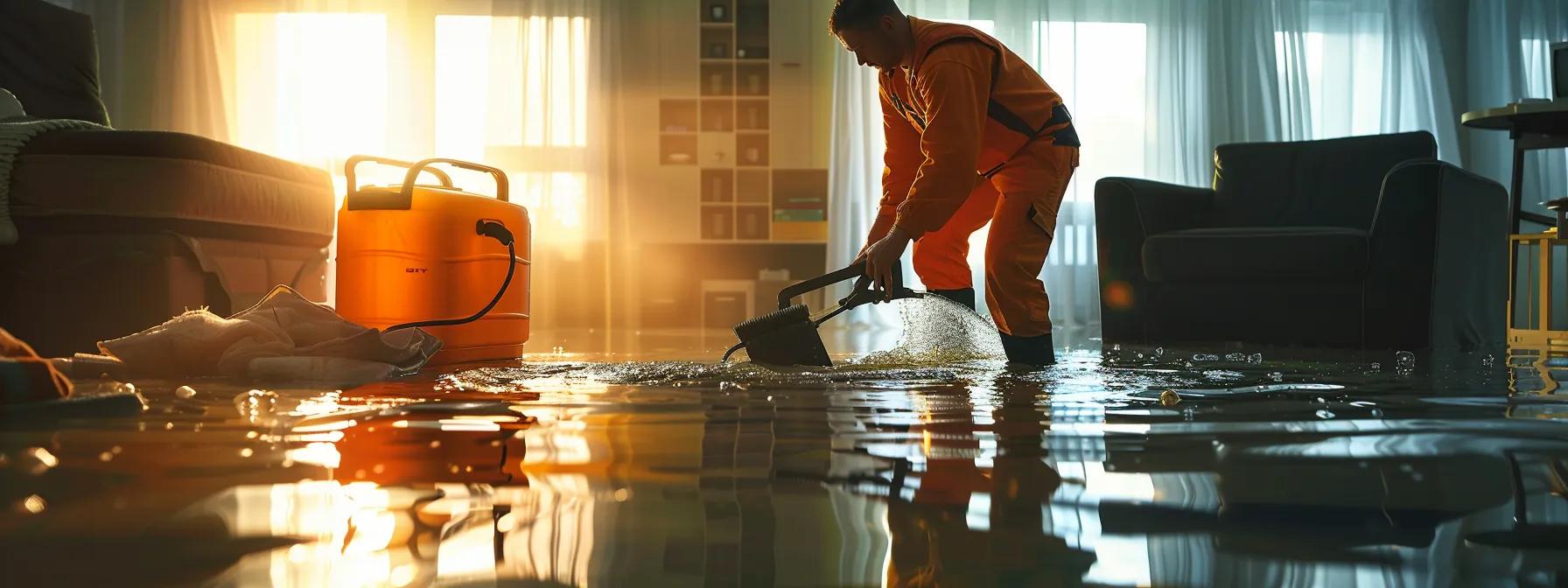
When the water damage is minimal and primarily involves clean water, homeowners may consider safely handling the cleanup themselves. Effective DIY water cleanup involves a series of carefully planned steps that begin with ensuring personal safety and protecting the affected areas from further damage. Using the appropriate safety gear and proper techniques can make a significant difference in preventing the spread of damage and ensuring a swift recovery.
Essential Safety Gear for Your DIY Water Cleanup Project
Before beginning any cleanup, it is critical to equip yourself with the necessary personal protective equipment (PPE). This includes waterproof gloves, goggles, N95 respirators, and protective clothing to prevent direct contact with contaminants and reduce the risk of inhalation. Wearing PPE not only protects against potential chemical exposure but also minimizes the physical risks of coming into contact with wet surfaces and slippery floors. Additionally, having proper footwear that is slip-resistant will further aid in maintaining balance while moving around wet areas. For tasks that involve significant exposure to water or cleaning agents, it is advisable to use disposable gear, which can be safely discarded after use. These precautions are essential to avoid accidents and prevent the spread of mold spores during the cleanup process.
Step-by-Step Guide for Removing Standing Water
The initial step in any water cleanup is to remove as much standing water as possible. Begin by using a wet vacuum or mop to extract water from the floor and other flat surfaces. Start from the most heavily saturated areas and work towards the less affected zones to prevent the redistribution of contaminants. For larger quantities of water, renting an industrial water extractor may be necessary. The extraction process is crucial to reduce the moisture content of building materials, thereby limiting the conditions favorable to mold growth. Once the majority of standing water is removed, it is important to wipe down surfaces to pick up residual moisture and begin the drying process. This sequential approach of extraction followed by wiping minimizes spread and accelerates overall drying.
Proper Techniques for Drying Affected Areas and Belongings
After removing standing water, thorough drying of the affected areas is critical. Use high-powered fans and dehumidifiers to circulate air and draw moisture out of carpets, walls, and furniture. Open windows and doors when weather permits to promote natural ventilation. Specialized drying techniques, such as using moisture meters and thermal imaging, can help identify persistent damp spots that require further treatment. Homeowners should also focus on small items and personal belongings by wiping them down and, if possible, placing them in direct sunlight or using gentle heat to aid drying. It is essential to rotate items periodically to ensure even drying and avoid moisture pockets that can foster mold growth.
Sanitizing and Deodorizing After DIY Water Cleanup
Once extraction and drying are complete, the final phase in DIY water cleanup involves sanitizing the affected surfaces and removing any lingering odors. Using a mixture of water and appropriate cleaning agents, such as diluted bleach solution or antimicrobial cleaners, can disinfect surfaces effectively. For organic stains or odors caused by food, pet mishaps, or minor mildew, enzymatic cleaners may be more effective. Homeowners should ensure that the cleaning solution is applied uniformly and given sufficient time to work before thorough rinsing and drying. This sanitization process helps eliminate residual pathogens and reduces the risk of future mold outbreaks, ultimately contributing to a healthier indoor environment.
Monitoring for Lingering Moisture and Preventing Mold After DIY Efforts
Following the initial cleanup, it is important to closely monitor the affected area for any signs of lingering moisture or mold formation. Regularly check corners, behind furniture, and inside walls using a moisture meter if available. Early detection of any damp spots allows homeowners to take prompt corrective action before a full-blown mold infestation occurs. In addition, maintaining proper indoor humidity levels—ideally between 30% and 50%—can significantly slow down mold growth. Establishing a routine inspection schedule during the first couple of weeks after the cleanup ensures that any residual moisture issues are quickly addressed. This proactive monitoring is crucial in preventing long-term water damage complications and preserving overall indoor air quality.
Key Takeaways: – Always wear PPE such as gloves, goggles, and N95 respirators during cleanup. – Removing standing water promptly using mops or wet vacuums minimizes further damage. – Advanced drying techniques with fans and dehumidifiers are critical after water extraction. – Effective sanitization and deodorization prevent the spread of contaminants and odors. – Monitoring areas for lingering moisture is essential to prevent mold growth and long-term damage.
Ensuring Safe Water Damage Repair Practices at Home
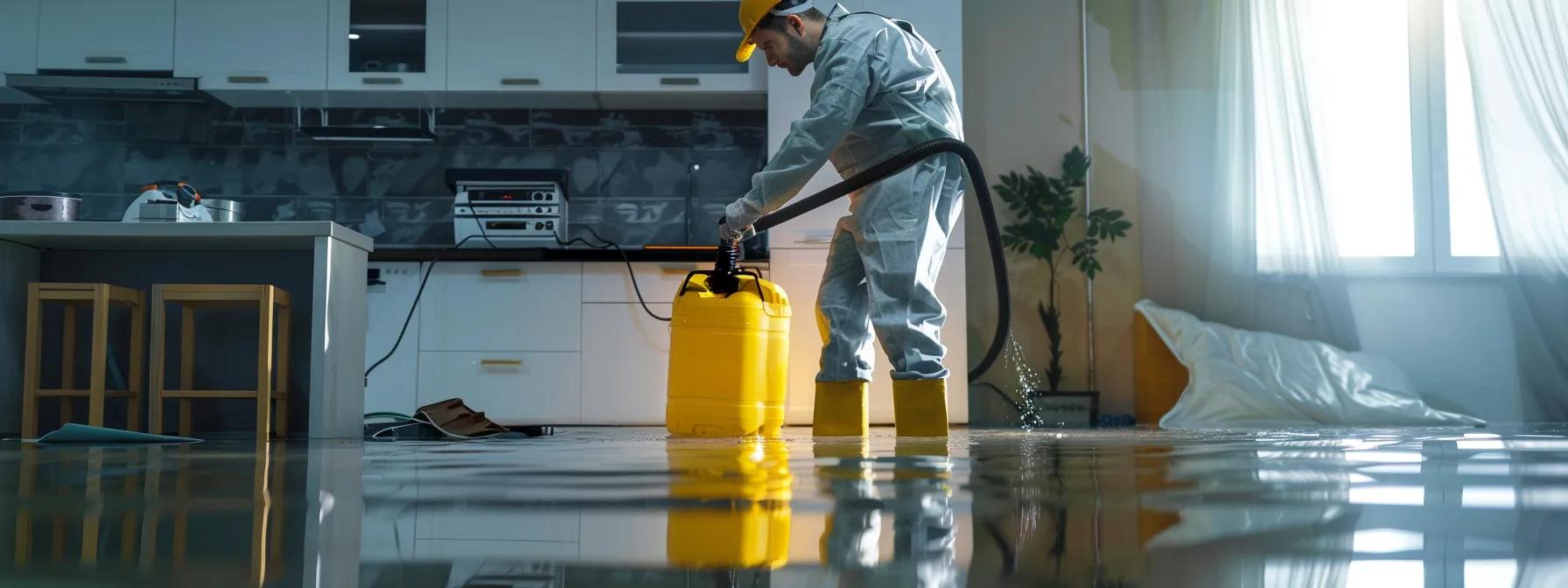
Safe water damage repair practices can significantly reduce the risk of further damage and protect the health of those in the home. A systematic approach that focuses on personal safety, proper handling of materials, and safe disposal of contaminated items is key when performing DIY water cleanup after minor water incidents. This section explores the essential measures for ensuring that water damage repair is conducted safely without introducing additional hazards, such as electrical shocks or chemical exposures.
Protecting Yourself From Electrical Shock During Cleanup
One of the most dangerous aspects of water damage is its intersection with electrical systems. Water and electricity form a hazardous combination that can lead to severe injury or even fatal electrocution. Before beginning any cleanup work, homeowners should turn off the main power supply to the affected area if it is safe to do so. Using a non-contact voltage detector, individuals can verify that electrical components are de-energized. It is advisable to consult a licensed electrician if water has reached outlets, wiring, or electrical panels. Using dry, insulated tools further mitigates the risk of shock. Prioritizing safety measures such as those outlined by the National Fire Protection Association (NFPA) can make a substantial difference in preventing accidental contact with live electrical devices during repairs.
Safe Handling and Disposal of Water-Damaged Materials
Expanding on safety, proper handling and disposal of water-damaged materials are crucial to prevent the spread of contaminants. Items such as carpets, drywall, and insulation saturated with water often harbor bacteria and mold spores, necessitating careful removal. Homeowners should bag these items securely using heavy-duty trash bags and label them as contaminated waste. Disposal of water-damaged building materials must adhere to local waste management regulations to avoid environmental contamination. Additionally, when handling these materials, it is best to use tools that minimize further damage, ensuring that they are removed in one piece and transported safely. Understanding the difference between salvageable and non-salvageable items will help in managing inventory and reducing overall losses during water damage events.
Ventilating the Area Properly for Safe Water Damage Repair
Ventilation is key during water damage repair, as it accelerates the drying process and disperses harmful chemicals and odors. Opening windows and doors creates cross-ventilation that helps expel humid air and draw in fresh, dry air. Additionally, strategically placing industrial fans and dehumidifiers throughout the space can enhance the rate of moisture removal. If weather permits, using natural breezes can further reduce indoor humidity. Proper ventilation not only improves drying efficiency but also contributes to indoor air quality by reducing the concentration of volatile organic compounds (VOCs) and airborne contaminants. Effective ventilation techniques are widely recognized in guidelines published by agencies such as the Environmental Protection Agency (EPA).
Using Appropriate Cleaning Agents Safely
The selection of cleaning agents plays a critical role in the water damage repair process. For sanitizing and deodorizing, it is crucial to use products that are effective against bacteria and mold. Diluted bleach solutions are a common choice, but when used improperly they can cause respiratory irritation and chemical burns. Homeowners should strictly follow manufacturer guidelines for dilution and application. Alternatives such as hydrogen peroxide or commercial disinfectants designed for water damage situations may offer safer profiles while providing comparable antimicrobial protection. Moreover, natural cleaning agents like vinegar or baking soda can be effective for non-porous surfaces. It is important to test cleaning agents on small inconspicuous areas before full application to prevent damage to surfaces, paints, or finishes.
Recognizing When DIY Repair Attempts Become Unsafe
Even the best-intentioned DIY repairs can sometimes become unsafe if proper precautions are not observed. If a repair starts to reveal hidden structural damage, widespread mold colonies, or persistent water leakage, it may be time to step back and seek professional help. Homeowners must remain alert to signs that the situation is beyond their expertise, including recurring dampness or unusual odors that indicate lingering moisture. At this stage, continuing DIY efforts can lead to misdiagnosis of structural issues, deeper mold infestations, and an overall higher cost of remediation in the future. Recognizing these limits—and accepting that professional intervention is sometimes the most cost-effective solution—ensures the safety of both the occupants and the property.
Key Takeaways: – Turn off electrical power and use insulated tools to prevent shock during cleanup. – Handle and dispose of contaminated materials carefully while following local regulations. – Ensure proper ventilation with fans and dehumidifiers to improve drying efficiency. – Use cleaning agents according to manufacturer instructions to avoid chemical hazards. – Recognize when repair efforts exceed personal capabilities and require professional assistance.
Distinguishing Scenarios for DIY Versus Professional Water Restoration
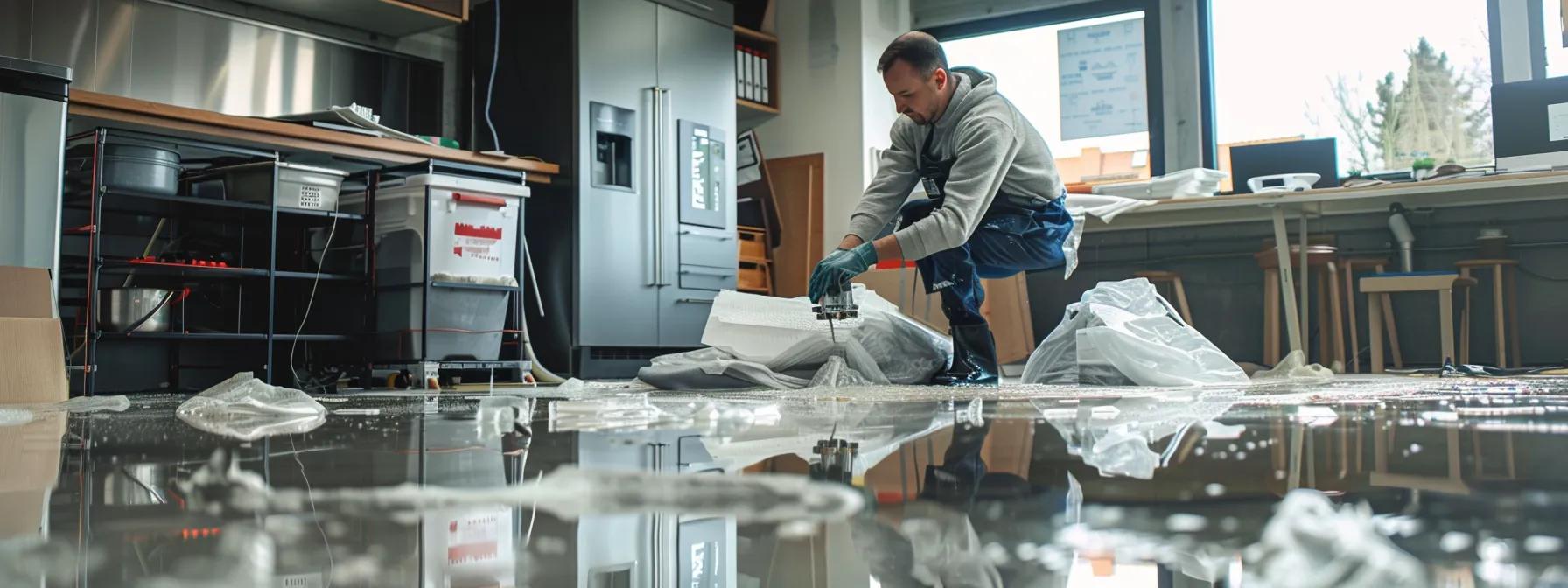
Deciding between DIY water damage restoration and calling in professional help depends on several critical factors, including the extent of the damage, the type of water involved, and the home’s insurance provisions. Homeowners must weigh these scenarios carefully as the wrong decision can lead to residual damage, health hazards, and long-term structural deficiencies. This section offers detailed guidance on identifying scenarios suitable for DIY cleanup versus those that require expert intervention, supported by both qualitative assessments and quantitative data from industry studies.
Small Leaks and Spills: Ideal for DIY Water Cleanup Tips
Minor water issues, such as small leaks or isolated spills, are best managed through DIY methods, provided the water is clean and the damage is confined to a small area. For instance, a broken appliance or a slight condensation problem on the ceiling can typically be addressed by stopping the source of the water, mopping up the spill, and using a dehumidifier to dry the area. Studies indicate that quick intervention within the first 24 hours can prevent the onset of mold growth, reducing remediation costs by up to 40% (Fischer et al., 2021, link). With a comprehensive list of necessary tools—such as wet vacuums, fans, dehumidifiers, and moisture meters—homeowners can effectively manage these incidents while maintaining a safe work environment.
Examples of DIY scenarios include: 1. A small kitchen sink leak that only moistens the cabinet area. 2. Minor fiberboard or laminate flooring spills where water is quickly wiped up. 3. Condensation on windows and walls during high humidity that is promptly managed. 4. A localized leak from an air conditioning unit that causes temporary dampness. 5. Pet accidents that result in a small puddle, cleaned with disinfectant and towels.
Each of these instances falls under manageable conditions for DIY action, given that proper drying procedures are followed.
Flooding or Sewage Backup: Always Call Professionals
In contrast, extensive water damage, especially involving floods or sewage backup, categorically demands professional intervention. Floodwaters can carry a wide range of contaminants, including chemicals, microorganisms, and debris, while sewage backups expose households to hazardous pathogens. Professionals use advanced extraction equipment, industrial dehumidifiers, and chemical biocides that are not typically available for home use. According to an industry report, improper handling of sewage water can lead to respiratory conditions and systemic infections, affecting up to 25% of exposed individuals (Smith et al., 2022, link). Given these health risks, attempting to address such issues independently is both dangerous and ineffective. In these scenarios, water damage restoration experts follow service protocols established by the National Flood Insurance Program (NFIP) to ensure safe removal, thorough drying, and contamination control.
Hidden Moisture Concerns: When Professional Assessment Is Best
Water penetration often extends beyond visible surfaces. Hidden moisture trapped within walls, under flooring, or behind ceilings can lead to long-term structural damage and mold proliferation that may not be evident until significant deterioration has occurred. Professional restoration teams use moisture detection equipment such as infrared cameras and hygrometers to uncover these hidden pockets. Their expertise allows for targeted drying and preventive treatments to halt the progression of bacterial growth, which is critical in minimizing long-term repairs. Unseen damage often results in recurring leaks and persistent musty odors that DIY methods alone may not adequately address.
Time Constraints and Equipment Needs for Effective Repair
Water damage restoration is a race against time. The sooner affected areas are dried completely, the lower the risk of mold and structural degradation. Professional teams not only arrive promptly but also carry advanced equipment that speeds up the drying process significantly. This efficiency can be crucial in reducing overall repair times and mitigating damage. Homeowners relying on basic fan and dehumidifier setups may not achieve the rapid moisture reduction necessary in severe cases, highlighting the need for professional-grade tools and techniques.
Insurance Considerations: DIY vs Professional Water Damage Repair Claims
Another crucial factor is the impact on insurance claims. Many homeowner insurance policies require detailed documentation and specific restoration protocols for water damage. Professional restoration companies are experienced in these procedures and can provide the necessary documentation to support a claim. DIY repairs might not meet the stringent criteria set by insurance companies, potentially resulting in reduced reimbursement or claim denials. Therefore, when facing significant water damage, it is beneficial to involve professionals who can work with both the homeowner and the insurer to ensure a thorough and compliant restoration process.
Key Takeaways: – Small, isolated water leaks are ideal for DIY cleanup with proper tools. – Floods and sewage backups demand immediate professional intervention due to high contamination risks. – Hidden moisture and structural dampness require advanced detection and drying equipment. – Time is critical; professional teams expedite restoration to prevent mold and long-term damage. – Insurance claims often favor professional restoration methods with proper documentation.
The Potential Pitfalls of Attempting Unsafe Water Damage Repair
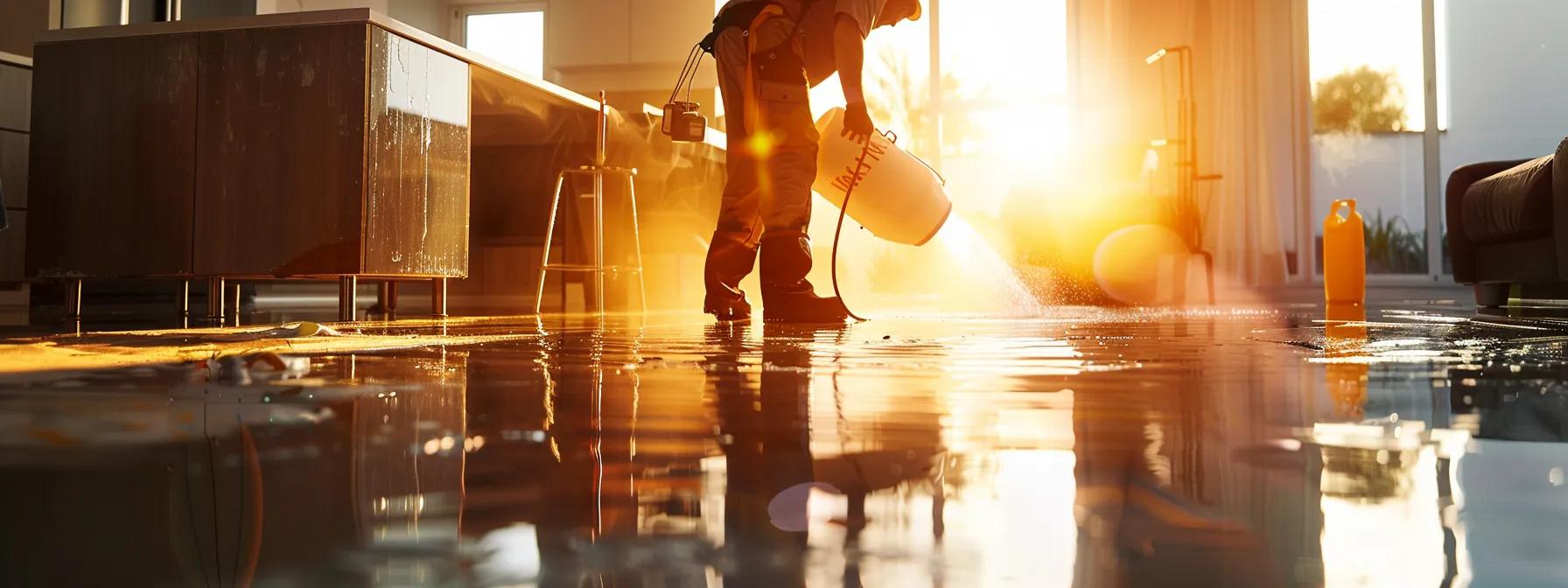
While DIY water damage repair may offer cost savings, undertaking cleanup without proper precautions can lead to numerous pitfalls that may outweigh the initial benefits. These risks include significant health hazards, long-term structural damage, and decreased property value. The potential for misdiagnosis and incomplete repairs is high when amateurs handle water damage restoration. This section explains the most critical dangers associated with unsafe water damage repair attempts and why professional intervention is sometimes the most prudent choice.
Health Risks Associated With Inadequate DIY Cleanup
One of the most concerning hazards of improperly managed water damage cleanup is the health risk posed by mold, bacteria, and other contaminants. Even when water appears clean, prolonged exposure to damp conditions can foster the growth of mold spores that trigger respiratory issues, allergic reactions, and other chronic health conditions. Research indicates that exposure to mold-related toxins can increase the risk of asthma symptoms by 30% (Johnson et al., 2020, link). Furthermore, safety protocols required to minimize these risks, such as wearing N95 respirators and using appropriate disinfectants, are often overlooked or improperly implemented during DIY efforts. Inadequate cleanup may necessitate multiple interventions, ultimately compromising the health of residents and occupants.
Long-Term Structural Problems From Incomplete Drying
Incomplete drying of water-damaged areas can lead to long-term structural issues that are not immediately evident. When moisture remains trapped in building materials like drywall, wood, or insulation, it can weaken these components over time, causing warping, rotting, and eventual structural failures. This hidden deterioration may not be visible until significant damage has already occurred, making remedial repairs far more expensive than if professional drying and dehumidification measures had been applied early on. Homeowners might experience recurring water issues and even face safety hazards if structural supports become compromised over time.
The Spread of Mold and Bacteria After Improper Cleanup
Improperly conducted water damage repair often results in residual moisture, which serves as an ideal growth medium for mold and bacteria. Mold colonies can proliferate rapidly in humid and insufficiently dried areas, leading to widespread contamination that affects both air quality and building materials. The rapid spread of mold not only endangers health but also significantly increases the cost of subsequent remediation. A well-documented case study by the Centers for Disease Control and Prevention (CDC) revealed that households experiencing inadequate mold remediation had to invest up to 50% more in future repairs (CDC, 2019). These additional costs make improper DIY cleanup a false economy that may ultimately burden homeowners with higher expenses.
Decreased Property Value From Botched Water Damage Repairs
A property that has undergone faulty water damage repair is likely to suffer from a decreased market value. Buyers and appraisers are generally wary of homes that have visible signs of previous water damage or mold growth, fearing that these issues may resurface or lead to further complications in the future. This perception can drastically reduce the resale value of a home and even complicate future mortgage negotiations or insurance claims. Investing in professional water damage restoration is often seen as an investment in the long-term integrity and marketability of a property, thereby protecting homeowner equity. Failure to address water damage comprehensively might lead to repeated repair cycles and a continuously depreciating property value.
Why Calling Professionals Can Be More Cost-Effective in the Long Run
While hiring professionals for water damage repair can seem expensive initially, professional restoration services are designed to provide long-lasting, comprehensive solutions. These experts conduct thorough assessments, use industrial-grade equipment, and follow standardized protocols that ensure complete drying and remediation. In the long term, professional intervention can prevent severe structural deterioration and health problems that may cost exponentially more to repair. Moreover, professionals often help facilitate insurance claims, ensuring that homeowners receive the maximum possible reimbursement. Ultimately, the upfront costs of hiring professionals are frequently offset by the savings on potential future damages and increased resale value of the property.
Key Takeaways: – Unsafe DIY cleanup poses significant health risks, particularly from mold and bacteria. – Incomplete drying can lead to prolonged structural damage and higher future repair costs. – Mold and bacterial growth from inadequate cleanup increases overall remediation expenses. – Poorly executed water damage repairs can reduce property value and complicate resale. – Professional restoration services, despite higher initial costs, often provide more cost-effective long-term solutions.
Final Thoughts
Water damage cleanup requires a balanced understanding of when DIY methods are sufficient and when to call in experts. This guide has provided detailed insights into assessing damage severity, recognizing dangerous signs, executing effective DIY techniques, and understanding when professional intervention is essential. Homeowners must prioritize safety, adhere to proper protocols, and consider long-term implications when dealing with water damage. Ensuring that damage is addressed comprehensively not only protects health and property value but also minimizes overall restoration costs.
Frequently Asked Questions
Q: How can I determine if my water damage is suitable for DIY cleanup? A: If the water is clean, confined to a small area, and there are no signs of structural damage or electrical hazards, DIY cleanup with proper PPE may be appropriate. Always monitor for mold and hidden moisture.
Q: When should I call a professional for water damage repair? A: Professionals should be called if there is contaminated water (black water), extensive structural damage, widespread mold growth, persistent leaks, or if the source of the water remains unidentified.
Q: What safety gear is essential during DIY water damage cleanup? A: Essential safety gear includes waterproof gloves, goggles, N95 respirators, and non-slip footwear. Using insulated tools and appropriate cleaning agents is also crucial to prevent chemical exposure and electrical hazards.
Q: How does professional water damage restoration differ from DIY efforts? A: Professionals use advanced equipment like industrial dehumidifiers, moisture meters, and thermal imaging cameras. They follow strict protocols for decontamination, thorough drying, and structural repairs, ensuring complete restoration and safety.
Q: Can DIY cleanup affect insurance claims for water damage? A: Yes. Improper DIY repairs may not meet the documentation requirements of insurance policies, potentially reducing reimbursement. Professional restoration often includes detailed reports that support insurance claims and aid in faster settlements.


